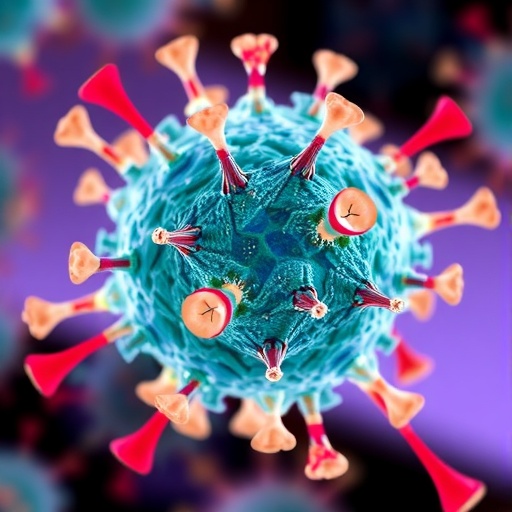PHILADELPHIA, PA — Overcrowding of intensive care units (ICUs) is a growing problem in American hospitals, often resulting in the need to place patients in alternate intensive care units within a hospital. Research has indicated that these "ICU boarder" patients — for example, a brain surgery patient staying in a cardiac ICU — have worse outcomes as a result of this alternate placement, and now, a new study suggests one reason for these worse outcomes is that ICU boarders, compared to non-boarders, appear to get markedly less attention from doctors and other caregivers. The study is led by researchers at the Perelman School of Medicine at the University of Pennsylvania and is published online today in the American Journal of Surgery.
"In this study, surgical ICU patients boarding in non-home units were more likely to be seen at the end of rounds, and on the whole received less bedside attention from ICU provider teams," said lead author Andrew M. Nunn, MD, an assistant professor of Surgery at Wake Forest School of Medicine, who was a fellow in Traumatology at the Perelman School of Medicine at the time of the study. "It's imperative that critical care providers be aware of this apparent tendency for ICU boarders to receive less attention so that they can develop interventions to correct the discrepancy."
The study comes as American ICU resources are increasingly strained — by an aging population, more use of complex surgical procedures, and a shortage of intensive care specialists. To cope with overcrowded ICUs, hospitals commonly board critical patients in alternate ICU facilities, often on different floors or otherwise at significant distances from the "home ICU." Several recent studies, including a 2014 study by José L. Pascual, MD, PhD, FACS, FCCM, FRCSC, an associate professor of Traumatology, Surgical Critical Care and Emergency Surgery and senior author on the new study, have found a higher rate of adverse outcomes — such as ventilator-related pneumonia — among these ICU boarders. Those findings hint that boarders tend to receive less active care than their home ICU counterparts.
To investigate the hypothesis, the Penn researchers systematically examined routine clinical encounters — known as rounds — between caregivers and patients associated with a Penn surgical ICU.
In over 500 such rounding instances, the researchers found that caregivers spent about 16 percent less time on rounds with boarder patients, compared to non-boarding patients. Even when adjusting for patient age, health status and other characteristics, and comparing the times of each rounding visit to the ICU patient average for that day, there remained a significant difference between rounding times for boarders and rounding times for non-boarders.
The boarders were also far more likely to be visited by caregiver teams at the end of rounds, when care teams presumably are at least mildly more fatigued. About 71 percent of boarders were seen in the last fifth of rounds, compared to only about 13 percent of non-boarders. More boarders in an ICU also meant more use of the telephone, hinting at a greater reliance on "phone medicine" than face-to-face assessment.
On the whole, the results confirm that boarding patients receive less medical attention, at least during rounds. The researchers suggest several possible causes for this shortfall in rounding care. Most obviously, the distance between the home-ICU and boarding-ICU places an additional burden on home-ICU-based care providers. Home-ICU care teams may also feel a reduced sense of "ownership" of patients housed in other ICUs. For their part, nursing staff in boarding ICUs may not have the full skill set needed for the optimal care of their boarders.
"Together, all of these factors can create a 'perfect storm' leading to subpar clinical care of the critically ill patient," Pascual said.
As a result of the mounting evidence, providers at Penn Medicine's surgical ICU are now encouraged to do rounds on boarding patients first rather than last. Other changes include the promotion of better communication between home-ICU care teams and boarding-ICU nurses, and the designation of ICU "generalist" nurses who are comfortable caring for boarding patients in any ICU.
"Future studies will focus on evaluating the effectiveness of these new interventions to ensure we are giving each patient the appropriate amount of attention and the best critical care possible," Pascual said.
###
Other co-authors of the study were Justin Hatchimonji, Daniel Holena, Mark Seamon, Brian Smith, Lewis Kaplan, Niels Martin, Patrick Reilly, and C. William Schwab.
Penn Medicine is one of the world's leading academic medical centers, dedicated to the related missions of medical education, biomedical research, and excellence in patient care. Penn Medicine consists of the Raymond and Ruth Perelman School of Medicine at the University of Pennsylvania (founded in 1765 as the nation's first medical school) and the University of Pennsylvania Health System, which together form a $6.7 billion enterprise.
The Perelman School of Medicine has been ranked among the top five medical schools in the United States for the past 20 years, according to U.S. News & World Report's survey of research-oriented medical schools. The School is consistently among the nation's top recipients of funding from the National Institutes of Health, with $392 million awarded in the 2016 fiscal year.
The University of Pennsylvania Health System's patient care facilities include: The Hospital of the University of Pennsylvania and Penn Presbyterian Medical Center — which are recognized as one of the nation's top "Honor Roll" hospitals by U.S. News & World Report — Chester County Hospital; Lancaster General Health; Penn Wissahickon Hospice; and Pennsylvania Hospital — the nation's first hospital, founded in 1751. Additional affiliated inpatient care facilities and services throughout the Philadelphia region include Good Shepherd Penn Partners, a partnership between Good Shepherd Rehabilitation Network and Penn Medicine.
Penn Medicine is committed to improving lives and health through a variety of community-based programs and activities. In fiscal year 2016, Penn Medicine provided $393 million to benefit our community.
Media Contact
Katie Delach
[email protected]
215-349-5964
@PennMedNews
http://www.uphs.upenn.edu/news/
############
Story Source: Materials provided by Scienmag




